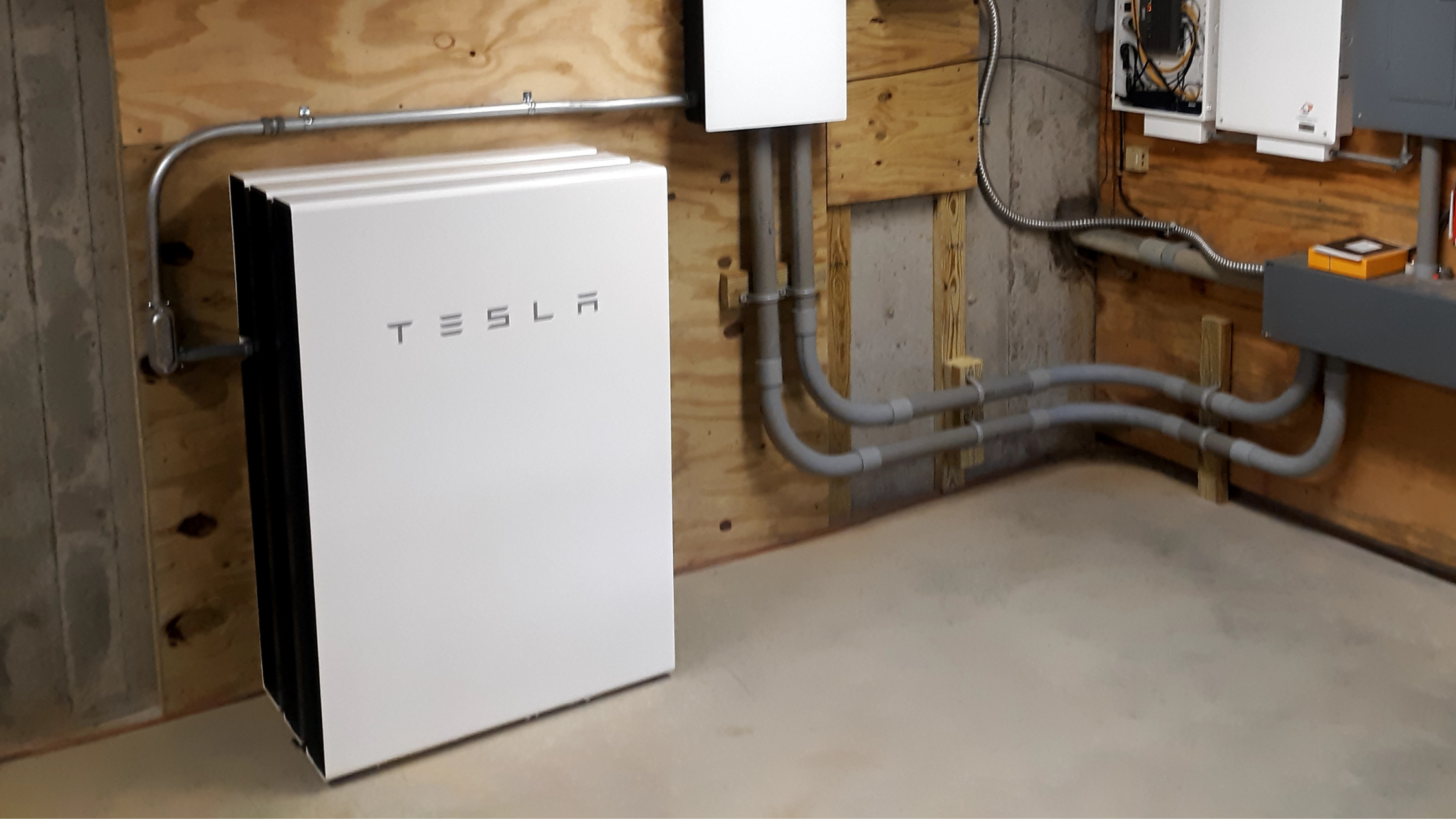Plus, we explain Green Mountain Power’s battery rebates and programs.
 Most people think about electricity one way: Turn on a light, pay the utility for it. (Grumble about how expensive it is and turn the light off.) But when you go solar with a battery backup system, you get a whole host of ways to use—and optimize—your power.
Most people think about electricity one way: Turn on a light, pay the utility for it. (Grumble about how expensive it is and turn the light off.) But when you go solar with a battery backup system, you get a whole host of ways to use—and optimize—your power.
“Home energy storage systems have developed a lot over the last few years,” says Robert Dunn, Project Manager at Green Mountain Solar. “These new systems are really user-friendly and have a lot of added functionality compared to their predecessors.” Here, he explains some of the ways to use a solar battery backup.
Read On: Battery Backup for Solar Panels: What to Know
Battery Backup Mode/ 100% reserve
Whether you’re facing summer thunderstorms or the ice and snow of a Vermont winter, you know that you want your electricity to stay on year-round to power things like your fridge and freezer (and all your food!), the lights, internet, maybe a basement pump that keeps your home dry. Enter battery backup mode.
“Pure battery backup mode is where your solar system keeps the battery 100% charged so whenever the grid goes down you have access to the full capacity of that battery,” says Robert.
Solar During Power Outages
But wait, can I use solar during a power outage? There’s a lot of confusion when it comes to solar and power outages. But here’s the truth: Solar panels on their own don’t work during a blackout. It’s a safety issue.
When you have solar, any extra power your panels produce gets sent back to the grid (and you get compensated for this thanks to net metering). During an outage, however, this puts linemen at risk of being electrocuted if they have to go out and work on power lines. So, as a safety measure, the solar panels automatically turn themselves off.
Except when you have a battery. Regardless of what usage mode you use, having a battery means your panels will continue to produce during a power outage. The battery disconnects your home from the grid during a blackout and safely stores the power your panels produce.
How does it compare: battery backup vs. a generator?
Batteries offer some very real upsides over generators, explains Robert. “Battery backup often times can check all of the boxes of what you’d want from a generator while being maintenance-free, totally silent, and fully automatic.” In the event of an outage, your home seamlessly switches over to the battery.
Cost-wise, batteries are more expensive than generators, but the sticker price is not the full picture. When you pair a battery with solar, you can take advantage of incentives like the investment tax credit and net metering. Plus, you’re likely protecting more of your home than you would with a small, portable generator.
Best of all, the fuel is free, with clean sunlight, not gasoline. And as long as there’s sun, your battery will continue to recharge itself. “If it’s sized correctly and you can be careful with your electricity use during the grid-down events, you can have an indefinite power source,” he says. “Even if you fully discharge the system, it will wake itself up to check if there’s sun available and it immediately starts recharging and powering your house off of that system.”
Self-consumption Mode
Another way to use your battery is to employ more home-grown power at home instead of sending it to the grid. “Through self-consumption mode, you are effectively reducing your reliance on the grid and acting as a small grid in your home itself,” explains Robert. “In self-consumption mode, as soon as there’s not enough energy coming from your solar panels to compensate for the loads in the house, the battery starts discharging.”
“A lot of people think the self-consumption mode is just a time thing, so at night when there is no sun, the battery just discharges,” he adds. “It’s actually a lot smarter than that.” For example, if you’re using a total of 4,000 watts, the battery can see 1,000 is coming from the solar and you’re importing 3,000 from the grid. The battery will then discharge 3,000 to zero out any import from the grid.
For many, this is a great way to seriously lessen reliance on the grid, especially since going completely off-grid isn’t feasible for most budgets. “Doing a 100% off-grid energy storage system would require a very large battery,” explains Robert. “But this can get someone to an 80-90% grid agnostic condition, without completely breaking the bank.”
Vermont utility company Green Mountain Power (GMP) offers a self-consumption mode credit to the tune of $850 per system.
Robert also mentions that many batteries have built-in features to ensure that you’re not depleting your battery when a storm is brewing. “For instance, Tesla has a storm watch feature: if your zip code has a storm coming, the self-consumption mode will be overridden, and it will stay at a full state of charge until that watch is no longer in effect.”
Hybrid mode/ Partial Reserve
As the name suggests, hybrid mode is a combo of self-consumption and backup mode. “It’s the self-consumption mode with a high reserve,” says Robert. “Homeowners know that for short-term durations they can last at least a full day on just that buffer alone, and they have the top 20-30% to use for self-consumption.” Alternatively, system owners can adjust the reserve capacity to suit their needs, even changing this with the seasons for a well finely tuned.
Read More: Vermont Utility Battery Programs
Green Mountain Power and the Vermont Electric Co-Op both offer home battery programs to offset the use of Peaker Plants. To learn more about how these programs work, read our blog and be up to date on current home energy storage utility programs in Vermont.
Ready to make the leap or learn more about solar and home batteries? Reach out to a solar advisor or subscribe to our newsletter.
By Julia Westbrook

Leave a Comment